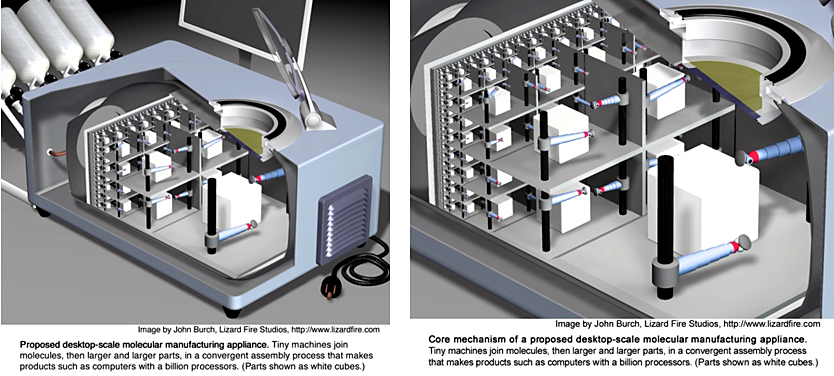
Other Books in Development in 2025
Nanotechnology, Nanomedicine, and AI: Toward the Dream of Global Health Care Equivalency


This book will explore and articulate an expanded vision for where advanced nanomedicine may lead.
The larger picture might be manifest via the emergence of a momentous paradigm shift that will have the potential capacity to dramatically transform the entire medical domain, through what is referred to as “Global Health Care Equivalency”, (GHCE), where any individual on the planet may have access to the same advanced and cost effective nanomedical diagnostic and therapeutic technologies, no matter where they happen to reside, or under what conditions they live.
The attainment of GHCE might serve to significantly reduce the perception of individuals in the developing world of being marginalized, at least in terms of health care, which may ultimately translate to conflict reduction. In the developed world, GHCE would serve to dramatically reduce health care expenditures across the board. Synergies between nanotechnology, nanomedicine, and AI may enable this vision on a global scale. Progress toward this goal will be incremental, with each successive wave of nanomedical technologies being more advanced than the previous wave.
The tipping point will arrive with the emergence of Molecular Manufacturing (MM), Quandary – Are Molecularly Manufactured Burgers Imbued with the Life Force? by Frank Josef Boehm and Angelika Domschke – QSpace Forums , which will make possible the cost effective fabrication of the classes of advanced autonomous nanomedical devices that Boehm describes in his first book: Nanomedical Device and Systems Design: Challenges, Possibilities, Visions.

Molecular Manufacturing: Emergence of the Grand Equalizer

![]()
This comprehensive companion text to Nanotechnology, Nanomedicine, and AI: Toward the Dream of Global Health Care Equivalency will explore the concepts and technologies behind the potential emergence of advanced Molecular Manufacturing(MM), while articulating how its potentially immense power may touch and positively transform practically every facet of human endeavor, while driving global scale environmental remediation.
It is estimated by many researchers and thought leaders that MM may transition from a science fiction concept to reality within the next 10-30 years. The rapidly evolving sophistication and popularity of 3D printing that we are witnessing at present might be considered to be a formative precursor of envisaged, exponentially more powerful, and dynamic “factory-at-home” systems, which would enable the ultrafine organization of molecular and atomic constituents to cumulatively fabricate virtually any type of consumer product imaginable (e.g., healthy gourmet foods, running shoes, toothbrushes, physician prescribed nanomedical diagnostic or therapeutic devices, photovoltaic cells, advanced batteries, smart phones, computers, as well as components for building additional MM units) with atomic/molecular precision.
In the medical realm MM will constitute the prerequisite technology for the realization of the vision of Global Health Care Equivalency.

Nanomedical Brain/Cloud Interface: Explorations and Implications


This book embarks on an in depth exploration of the future (hypothetical) possibility that the cerebral cortex of the human brain might be seamlessly, safely, and securely connected with the Cloud as a Brain/Cloud Interface (B/CI). Such an envisaged nanomedically facilitated cognitive augmentation may consist of a highly integrated network of sophisticated autonomous nanorobotic devices coupled with advanced AI toward the enablement of instantaneous and finely controllable connectivity with the Cloud.
This interface might serve as a personalized conduit through which individuals would not only have immediate access to virtually any facet of cumulative human knowledge, but also the optional and specialized capacity to engage in real time fully immersive experiential/sensory engagement, including what is referred to as “Transparent Shadowing” (TS), where individuals may experience episodic segments of the lives of other willing participants anywhere on the planet in real time, at full sensory resolution.
In conjunction with an investigation of the technical aspects of a B/CI, this book will also delve into its ethical, moral, sociological, legal, and philosophical implications. The prospective usefulness and benefits of such a powerful technology will be tempered by a careful consideration of the perceived risks and potential for misuse, such as neocortex hacking and nefarious thought manipulation and control, toward the formulation of a prudent future policy.
Myriad non-trivial questions will be brought to bear toward elucidating how B/CI technologies might potentially impact ones sense of self, and how that self may relate to others, the world, and beyond.
What might the benefits, risks, and consequences for human civilization be, when individuals have access to unprecedented opportunities for significant personalized cognitive, sensual, and experiential augmentation, and who may, through the use of B/CI technologies, be so intimately interconnected?
(Image credit: i-HLS)

News
New Once-a-Week Shot Promises Life-Changing Relief for Parkinson’s Patients
A once-a-week shot from Australian scientists could spare people with Parkinson’s the grind of taking pills several times a day. The tiny, biodegradable gel sits under the skin and releases steady doses of two [...]
Weekly injectable drug offers hope for Parkinson’s patients
A new weekly injectable drug could transform the lives of more than eight million people living with Parkinson's disease, potentially replacing the need for multiple daily tablets. Scientists from the University of South Australia [...]
Most Plastic in the Ocean Is Invisible—And Deadly
Nanoplastics—particles smaller than a human hair—can pass through cell walls and enter the food web. New research suggest 27 million metric tons of nanoplastics are spread across just the top layer of the North [...]
Repurposed drugs could calm the immune system’s response to nanomedicine
An international study led by researchers at the University of Colorado Anschutz Medical Campus has identified a promising strategy to enhance the safety of nanomedicines, advanced therapies often used in cancer and vaccine treatments, [...]
Nano-Enhanced Hydrogel Strategies for Cartilage Repair
A recent article in Engineering describes the development of a protein-based nanocomposite hydrogel designed to deliver two therapeutic agents—dexamethasone (Dex) and kartogenin (KGN)—to support cartilage repair. The hydrogel is engineered to modulate immune responses and promote [...]
New Cancer Drug Blocks Tumors Without Debilitating Side Effects
A new drug targets RAS-PI3Kα pathways without harmful side effects. It was developed using high-performance computing and AI. A new cancer drug candidate, developed through a collaboration between Lawrence Livermore National Laboratory (LLNL), BridgeBio Oncology [...]
Scientists Are Pretty Close to Replicating the First Thing That Ever Lived
For 400 million years, a leading hypothesis claims, Earth was an “RNA World,” meaning that life must’ve first replicated from RNA before the arrival of proteins and DNA. Unfortunately, scientists have failed to find [...]
Why ‘Peniaphobia’ Is Exploding Among Young People (And Why We Should Be Concerned)
An insidious illness is taking hold among a growing proportion of young people. Little known to the general public, peniaphobia—the fear of becoming poor—is gaining ground among teens and young adults. Discover the causes [...]







